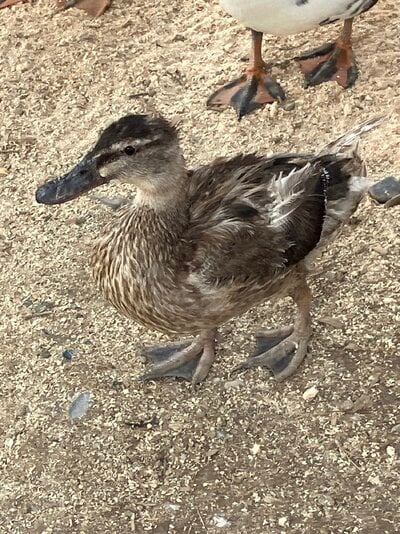NewJourney
Songster
I was told this is a Rouen duck. I picked her up with two runners. She is tiny! I’ve never had a Rouen but I know they’re supposedly Pekin-sized. What do you think? She seems to be very underweight but even if she had a bunch of weight added she’s still tiny in stature compared to my khaki Campbell girls. Pictured with my Khaki Campbells and Magpies.


It appears as though her wings have been cut to prevent flying. I see iridescence in her wings in the sunlight.
To me, as uneducated about duck breeds as I am, she looks like a Rouen coloration on a call duck cross? I know her bill is much too long and large for a call duck. What do you think?
While making this post I just checked another thread that was suggested and their beautiful tiny Rouen is a Mallard. Haha. Is it a mallard?? I don’t know of one of her back toes is removed. I’ll check tomorrow. Thoughts?


It appears as though her wings have been cut to prevent flying. I see iridescence in her wings in the sunlight.
To me, as uneducated about duck breeds as I am, she looks like a Rouen coloration on a call duck cross? I know her bill is much too long and large for a call duck. What do you think?
While making this post I just checked another thread that was suggested and their beautiful tiny Rouen is a Mallard. Haha. Is it a mallard?? I don’t know of one of her back toes is removed. I’ll check tomorrow. Thoughts?




